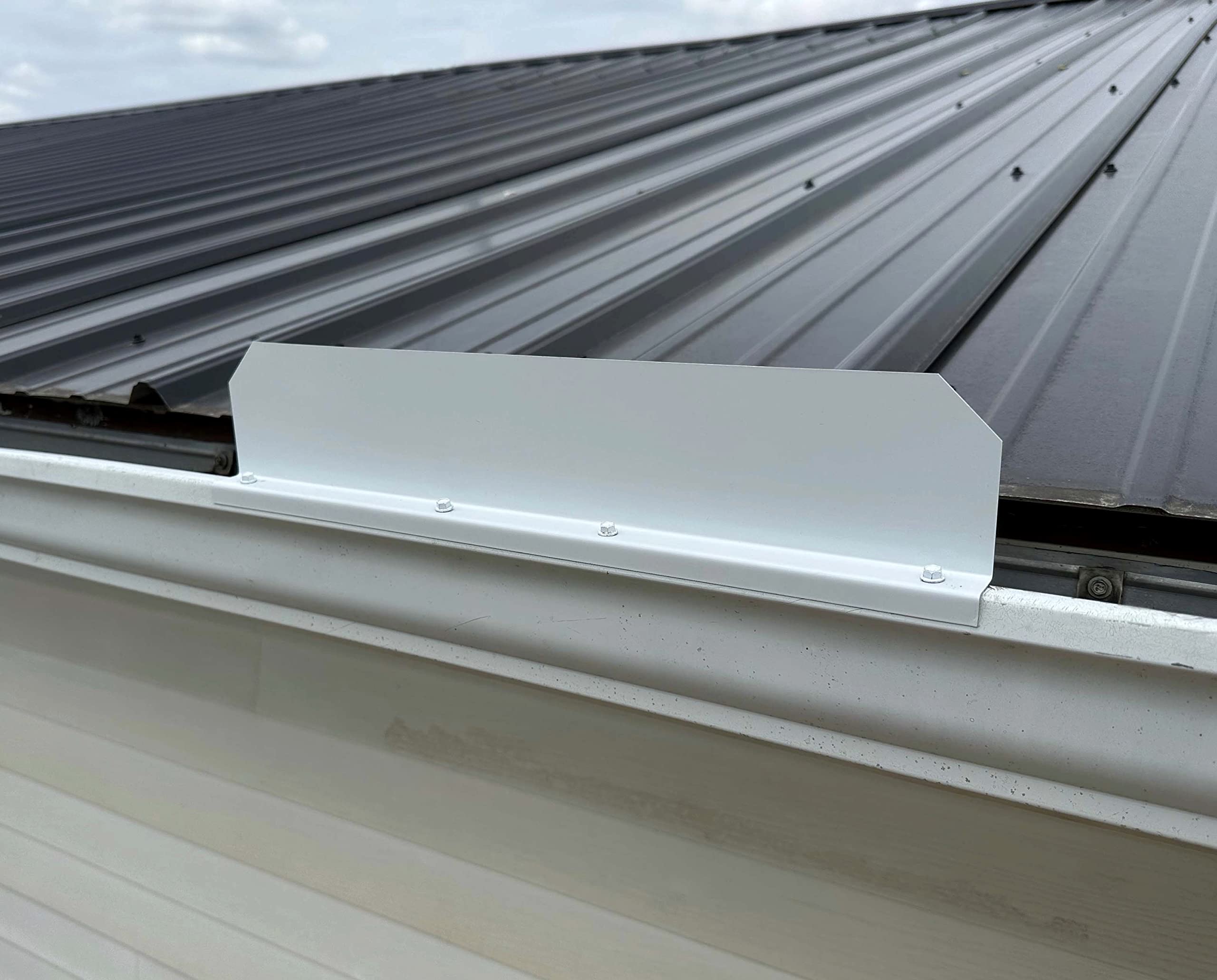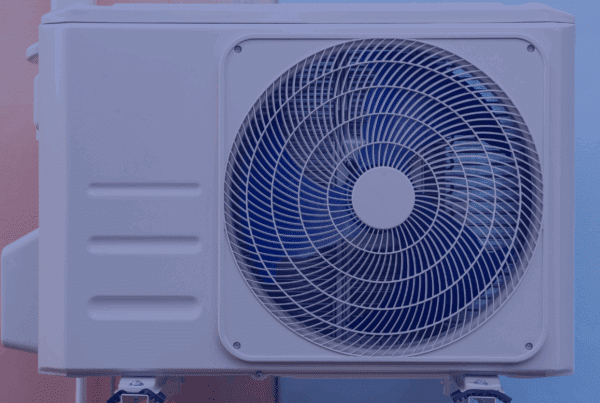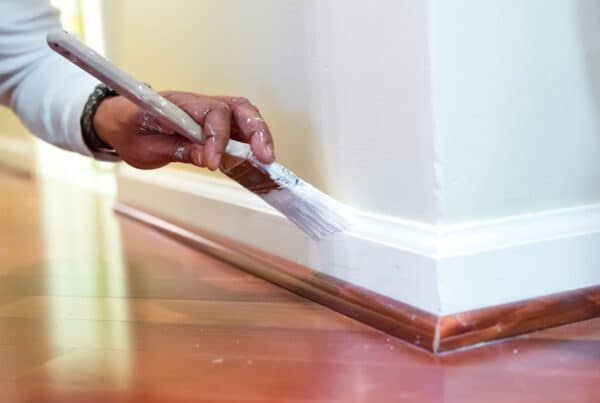
Most people don’t think about gutters until there’s a problem. After a heavy rain, you might notice water spilling over the edge. That overflow can cause serious issues—like damage to siding, soil erosion, or a wet basement. One easy fix? A gutter splash guard.
This small piece of metal or plastic helps stop overflow in problem areas. It’s affordable, easy to install, and highly effective.
What Is a Gutter Splash Guard?
A gutter splash guard is a curved or angled piece that attaches to your gutter. It’s usually placed at the bottom of roof valleys. These areas get a lot of fast-moving rainwater. Without a splash guard, water can shoot past the gutter and spill over.
Splash guards catch that water and guide it into the gutter. They reduce overflow and help your gutter system work the way it should. These guards come in aluminum, galvanized steel, or heavy-duty plastic. Many are made to blend in with your gutter system.

Why Gutter Splash Guards Matter
Even a small amount of overflow can cause big problems. Splash guards add a layer of protection where you need it most. Here’s how they help:
- Stops soil erosion near your home
Without protection, water can dig into your landscaping. It washes away mulch, dirt, and even plant roots. Over time, this erosion affects how water drains around your foundation. - Protects siding and walls
Water that runs down your siding leaves streaks and stains. It can cause paint to peel or siding to warp. Moisture may even sneak inside your walls. - Keeps basements and crawl spaces drier
When water pools near your foundation, it often ends up inside. A gutter splash guard helps keep that water in the gutter, not around your home’s base. - Preserves your landscaping
If water constantly pours onto plants or decorative borders, it damages them. Splash guards redirect the flow and protect what you’ve planted. - Reduces water pooling on walkways
Walkways under roof valleys can become slippery. Splash guards keep water from hitting the ground directly.
Signs You Might Need a Splash Guard
Not sure if you need a gutter splash guard? Watch for these signs:
- Water spills over the gutter during storms
If you see waterfalls coming from your roof valleys, your gutters are overwhelmed. - Mulch or dirt is scattered after it rains
Washed-out landscaping often points to poor water control. - Siding has water streaks or damage
Overflowing water might be causing it. - Basement feels damp after heavy rain
This may be a sign of water pooling around your foundation. - Plants near your home look beaten down
Too much water runoff can harm your flower beds.
If you notice any of these, a splash guard might be just what your home needs.
Gutter Splash Guard vs. Gutter Guard
People often mix up these two. They’re not the same.
- A gutter splash guard handles overflow. It’s placed where fast-moving water would otherwise shoot past the gutter.
- A gutter guard blocks leaves and debris from clogging your gutters. It covers the entire gutter system.
The two can work together. Splash guards manage high-flow water. Gutter guards keep things clean. Both improve how your gutters function.

Can You Install a Splash Guard Yourself?
Yes, in many cases, you can install a gutter splash guard on your own. Most models are simple to attach and don’t require special tools. But whether or not you should do it yourself depends on your comfort level and your home’s layout.
If you live in a one-story home with safe, easy access to your gutters, a DIY installation might be a good option. This is especially true if you’re comfortable using a ladder and have some basic tools on hand.
However, if your roof is steep, your home has multiple stories, or you’re not confident working at heights, it’s safer to call in a professional. It’s also a smart move to hire help if you’ve already noticed signs of water damage or poor drainage. That way, you can get a full inspection of your gutters and roofline.
Home inspectors and gutter professionals know exactly where splash guards are needed. They can also catch underlying issues you may not see—like sagging gutters, fascia damage, or clogged downspouts. A small investment in expert help can save you from bigger problems down the road.
How a Home Inspector Can Help
A good home inspector doesn’t just look at walls and pipes. They also check exterior systems like gutters. Here’s what they do:
- Check for overflow or bad drainage
Inspectors look for signs like water stains, soil erosion, or soggy spots. - Spot missing or damaged guards
They’ll let you know where a gutter splash guard should be added. - Look for moisture problems
Inspectors check for water damage on fascia boards, walls, and even in the basement. - Suggest real solutions
Whether it’s splash guards, downspout extensions, or re-angled gutters, they’ll tell you what needs to be done.
Getting a home inspection is a smart step before the rainy season starts—or before buying a new home.
A Small Upgrade With Big Impact
Splash guards are affordable and easy to install. But their impact is huge. They keep water moving in the right direction and protect your home from the top down.
With a gutter splash guard, you can:
- Avoid damage to your siding and landscaping
- Reduce the risk of basement moisture
- Keep your home looking clean and dry
Pair that with regular gutter cleaning and you’re in great shape for rainy days.
Final Thoughts: Protect Your Home Today
Rain shouldn’t ruin your siding, foundation, or flower beds. A gutter splash guard is a small fix that prevents big problems. It’s one of the easiest ways to improve your home’s water management.
Need help deciding if splash guards are right for your home?
Schedule an inspection with us today. We’ll look at your gutters, roof valleys, and foundation. We’ll let you know if splash guards—or other solutions—can help protect your home. Let’s keep your house safe, dry, and damage-free—one drop at a time.



